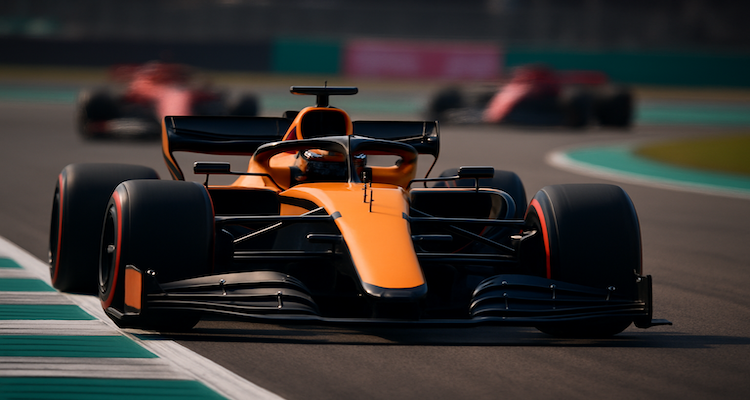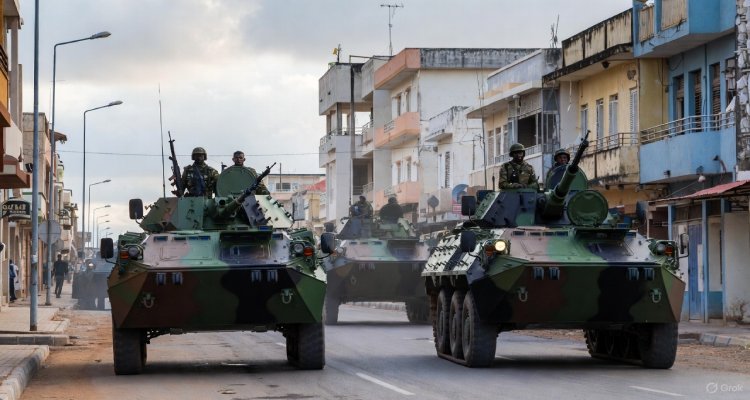GRSE Delivers Advanced Guided-Missile Frigate ‘Himgiri’ to Indian Navy Under Project 17A
Garden Reach Shipbuilders and Engineers Ltd hands over the first of three stealth frigates, marking a major milestone in India’s naval modernization.
GRSE delivers advanced stealth frigate ‘Himgiri’ to the Indian Navy under Project 17A. The vessel is part of a seven-frigate order aimed at enhancing maritime capabilities.
A New Chapter for India’s Naval Power
In a significant boost to India’s maritime defense capability, Garden Reach Shipbuilders and Engineers (GRSE) Ltd delivered the advanced guided-missile frigate ‘Himgiri’ to the Indian Navy on July 31. This state-of-the-art warship is the first of three vessels being constructed by GRSE under the Indian Navy’s ambitious Project 17A—a program designed to significantly upgrade India’s surface fleet with stealthier, faster, and more lethal frigates.
The delivery ceremony marks a pivotal moment in India’s naval shipbuilding efforts, reaffirming the country’s push for defense indigenization and maritime dominance in the Indo-Pacific region.
Reviving a Legacy: The New ‘Himgiri’
The newly built Himgiri draws its name from the decommissioned Leander-class frigate INS Himgiri, which served the Indian Navy with distinction before being retired on May 6, 2005. The modern Himgiri is a reincarnation not just in name, but in spirit—equipped with cutting-edge technology and designed for multi-dimensional warfare.
Its delivery reflects India’s strategic goal of replacing aging platforms with advanced stealth frigates that can neutralize threats from the air, sea, and beneath the surface.
Project 17A: India’s Stealth Frigate Frontier
Project 17A is an advanced continuation of the Navy’s earlier Project 17 (Shivalik-class) frigates, integrating superior stealth features, improved automation, and better sensor systems. The project includes a total of seven stealth frigates, with three built by GRSE in Kolkata and four by Mazagon Dock Shipbuilders Ltd (MDL) in Mumbai.
The Warship Design Bureau of the Indian Navy has spearheaded the in-house design of these frigates, with an impressive 75% of the equipment and systems sourced from indigenous firms—a testament to the Make in India initiative.
Key highlights of Project 17A frigates include:
- Length: 149 meters
- Displacement: Approx. 6,670 tonnes
- Speed: 28 knots
- Capabilities: Advanced stealth, guided missile systems, modern sensors
- Role: Multidimensional warfare—air, surface, and sub-surface threats
Timeline of Project 17A Ships
The Navy’s Project 17A frigate program is progressing steadily, with several ships already launched and others at various stages of construction:
- Nilgiri (MDL) – Launched September 28, 2019
- Himgiri (GRSE) – Launched December 14, 2020; delivered July 31, 2025
- Udaygiri (MDL) – Launched May 17, 2024; sea trials expected late 2024
- Dunagiri (GRSE) – Launched July 2025
- Taragiri (MDL) – Launched September 2022
- Vindhyagiri (MDL) – Launched August 2023
- Mahendragiri (MDL) – Final vessel in the series
Each of these ships is named after prominent Indian mountain ranges, symbolizing strength and resilience.
Strategic Impact and Operational Significance
The addition of Himgiri to India’s naval arsenal is more than just another delivery—it is a strategic move amid rising maritime tensions and evolving geopolitical dynamics, particularly in the Indian Ocean Region (IOR).
Defense analysts point to the enhanced stealth and combat features of the P17A class as a necessary evolution to counter the assertiveness of regional navies, especially amid increasing Chinese activity in the IOR.
“The Project 17A class marks a generational leap in India’s indigenous warship design and capability,” said Commodore Anil Jai Singh (Retd.), a defense expert. “The integration of smart sensors, stealth shaping, and long-range strike capacity positions the Indian Navy among the top blue-water navies globally.”
Looking Ahead: Commissioning and Combat Readiness
While Himgiri has been formally delivered, it will now undergo a series of rigorous harbor and sea trials, during which its weapon systems, radar arrays, propulsion systems, and defensive suites will be tested. Following successful trials, the ship is expected to be formally commissioned into the Indian Navy’s fleet in the coming months.
The commissioning will mark a full transition from shipyard to active duty—a key phase that will ensure the vessel’s readiness for future operational deployment.
A Boost for Indigenous Defense Manufacturing
GRSE’s role in constructing Himgiri underscores India’s maturing defense public sector shipbuilding capabilities. The use of indigenous materials and systems—ranging from sensors and radars to electronic warfare suites—demonstrates how Indian defense industry players are rising to meet strategic national security objectives.
With over 75% indigenous content, the project aligns with the Atmanirbhar Bharat (Self-Reliant India) initiative, aimed at reducing dependence on foreign military imports and fostering local innovation.
Conclusion: Charting India’s Maritime Future
The delivery of Himgiri under Project 17A reflects a convergence of advanced technology, strategic foresight, and indigenous capability. As India continues to modernize its navy amid shifting global power equations, platforms like Himgiri will play a vital role in safeguarding national interests and projecting strength across the Indo-Pacific.
From honoring a legacy to embracing the future, Himgiri stands as a testament to India’s evolving naval doctrine—agile, assertive, and self-reliant.
Disclaimer: This article is for informational purposes only and is based on publicly available facts and statements. The views quoted herein belong to their respective experts.











